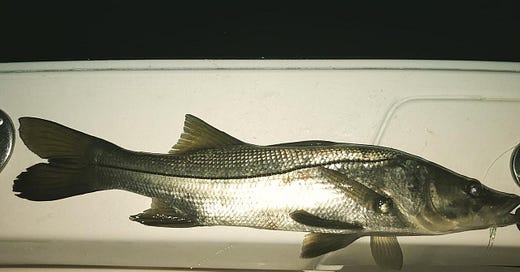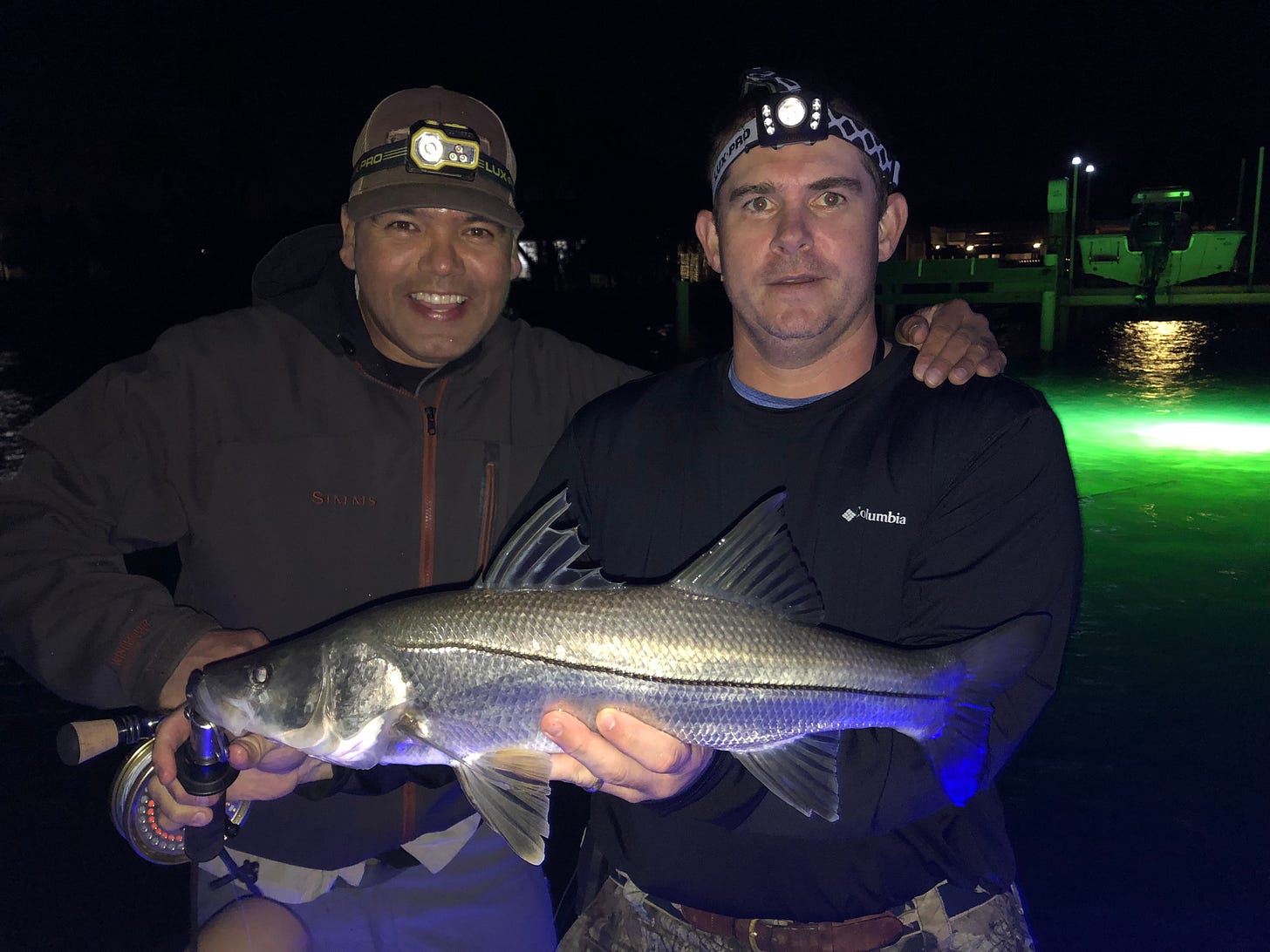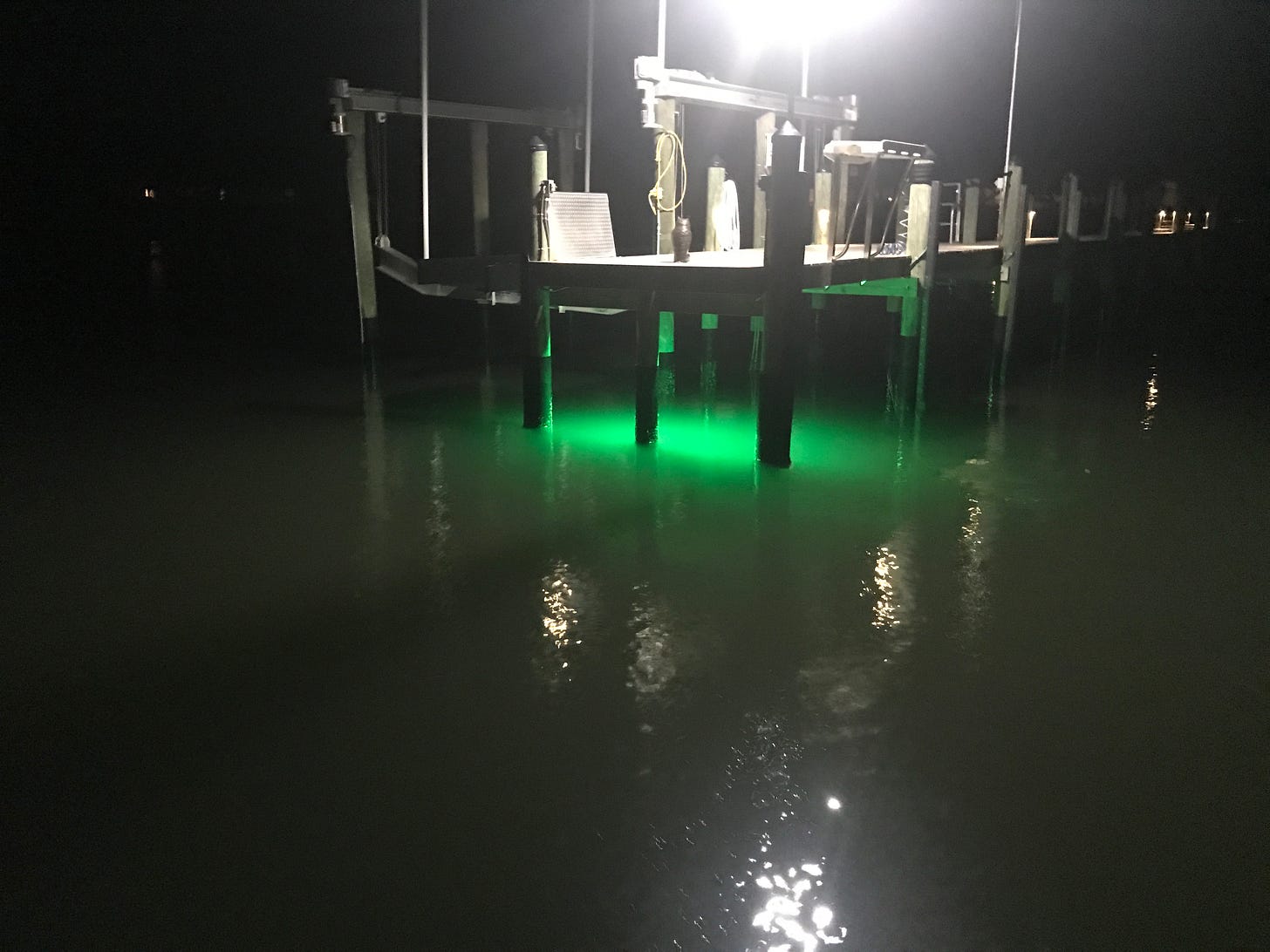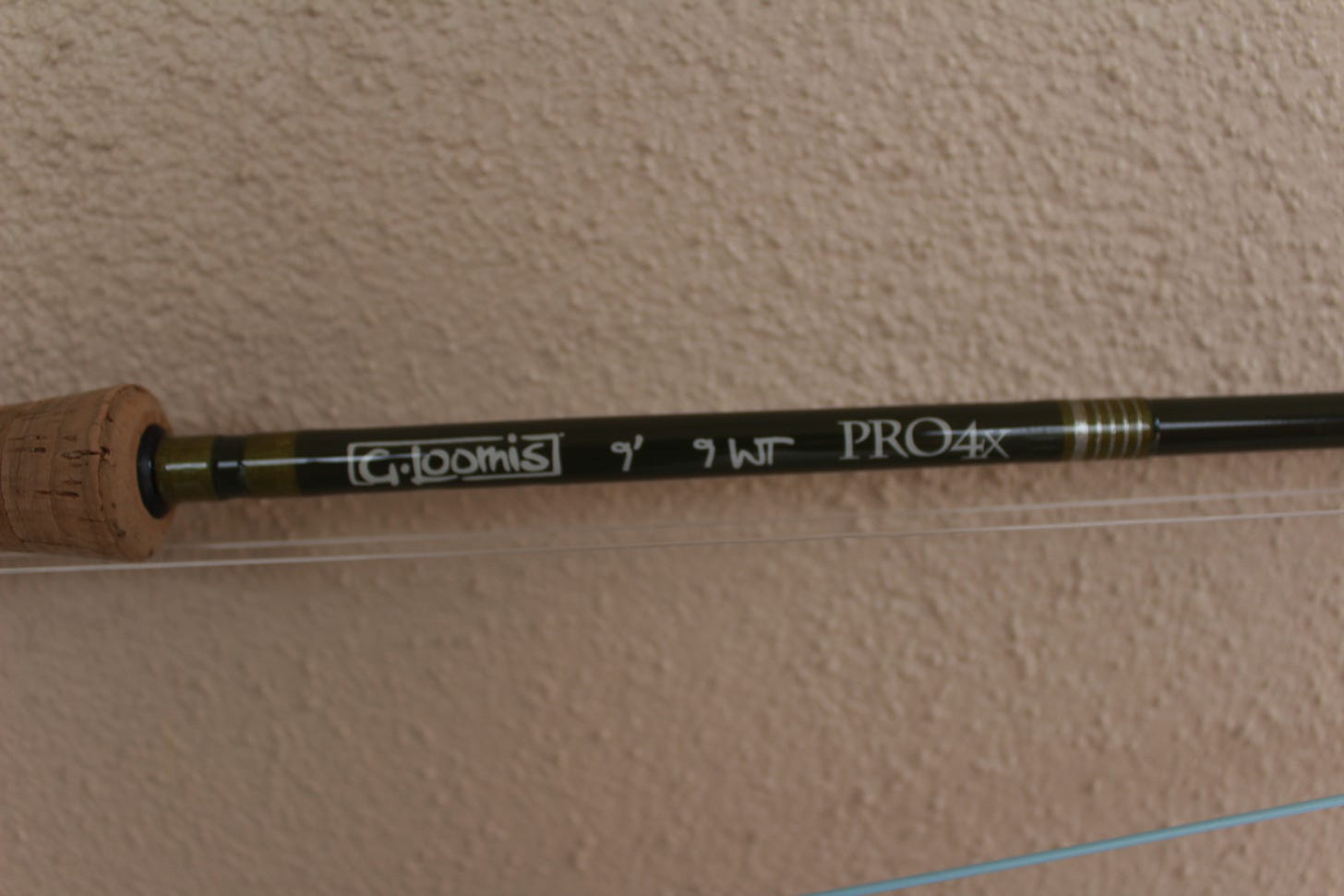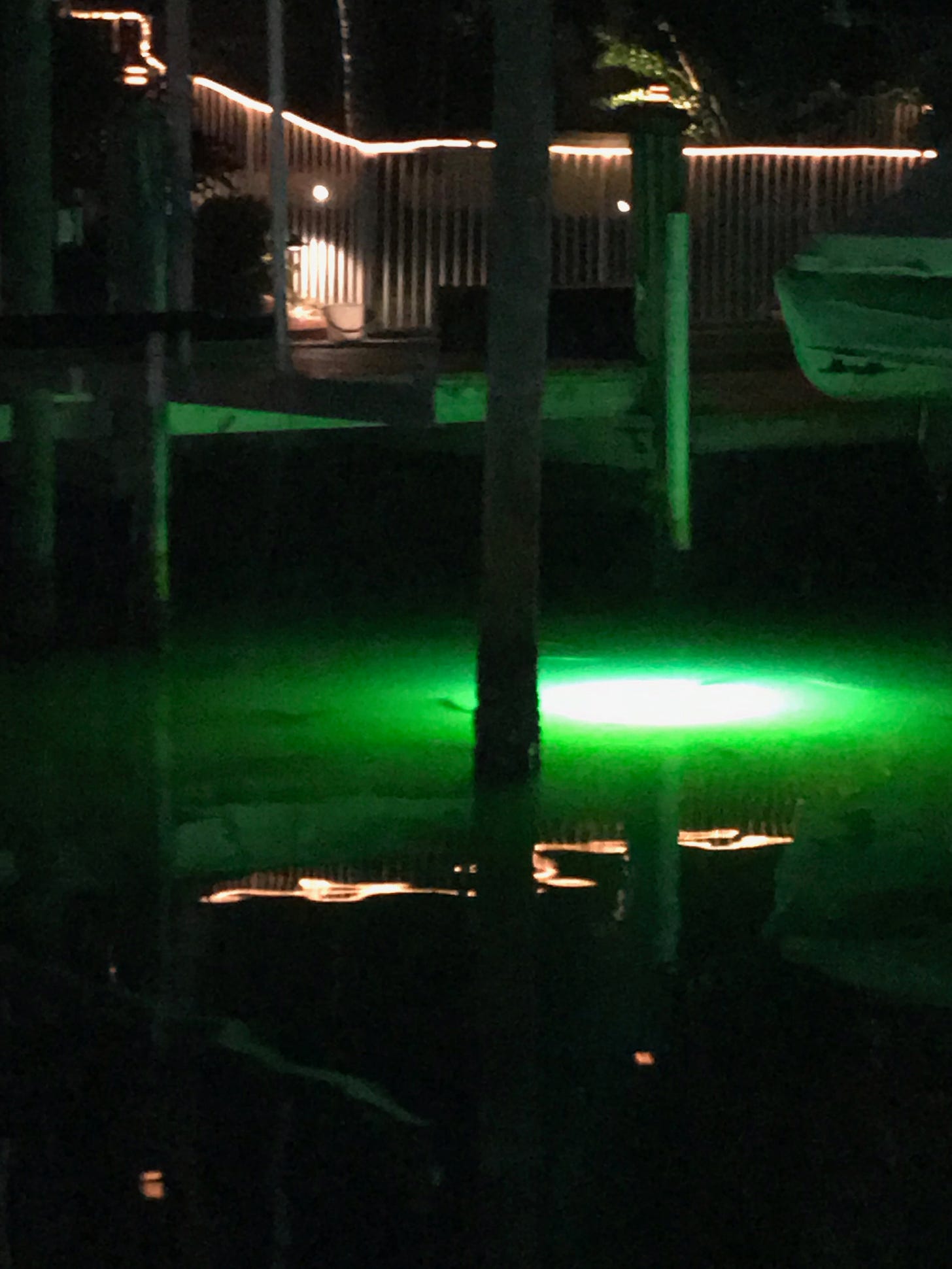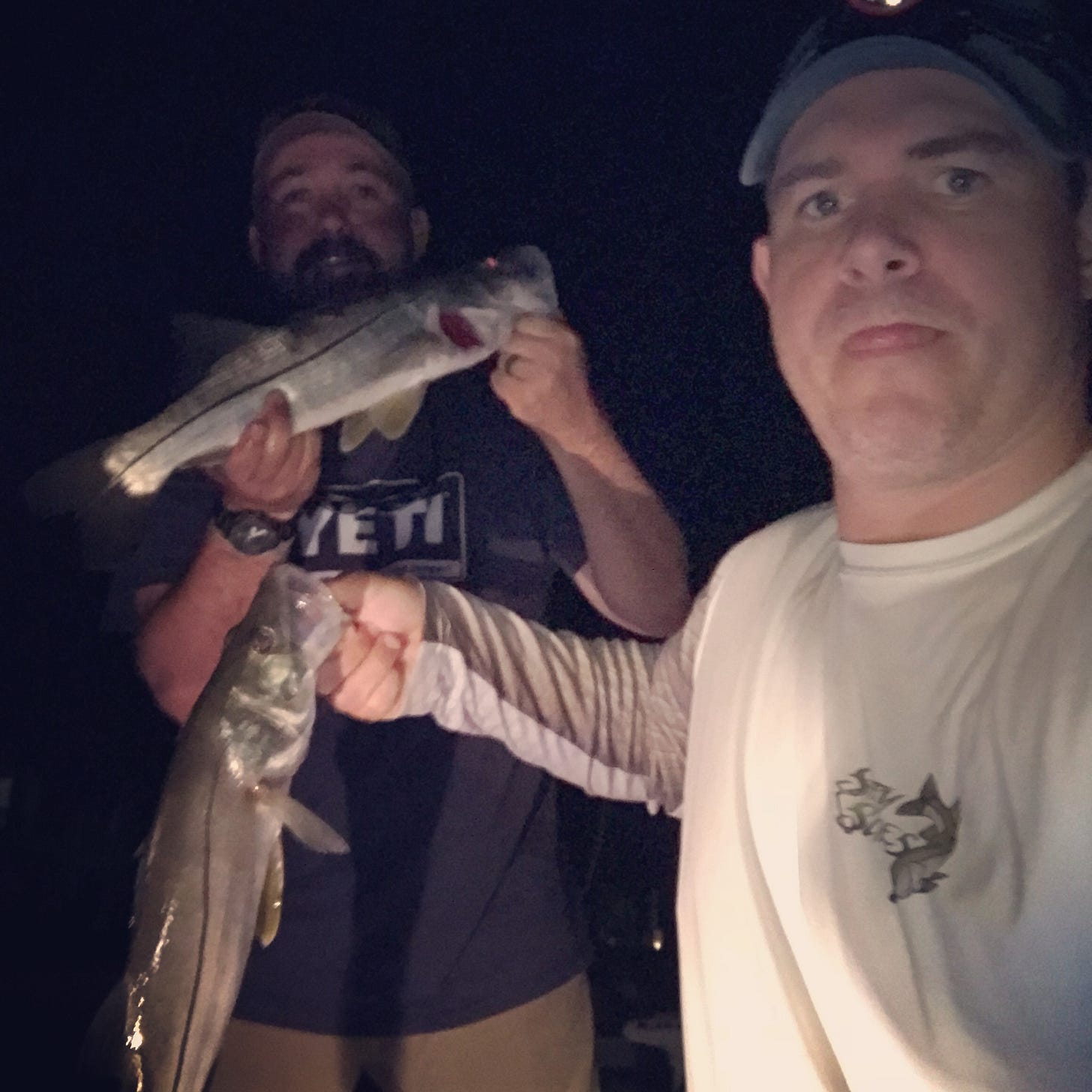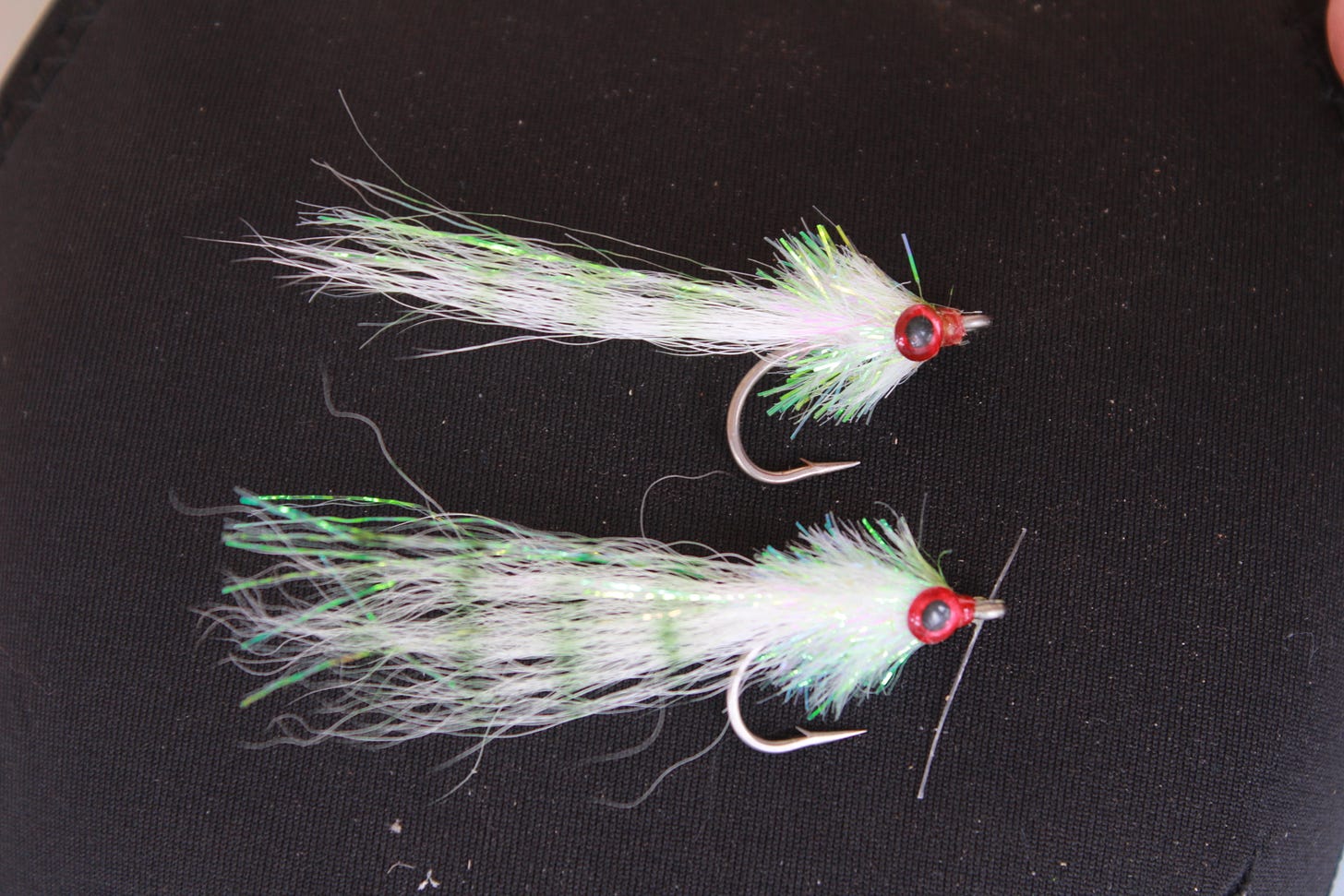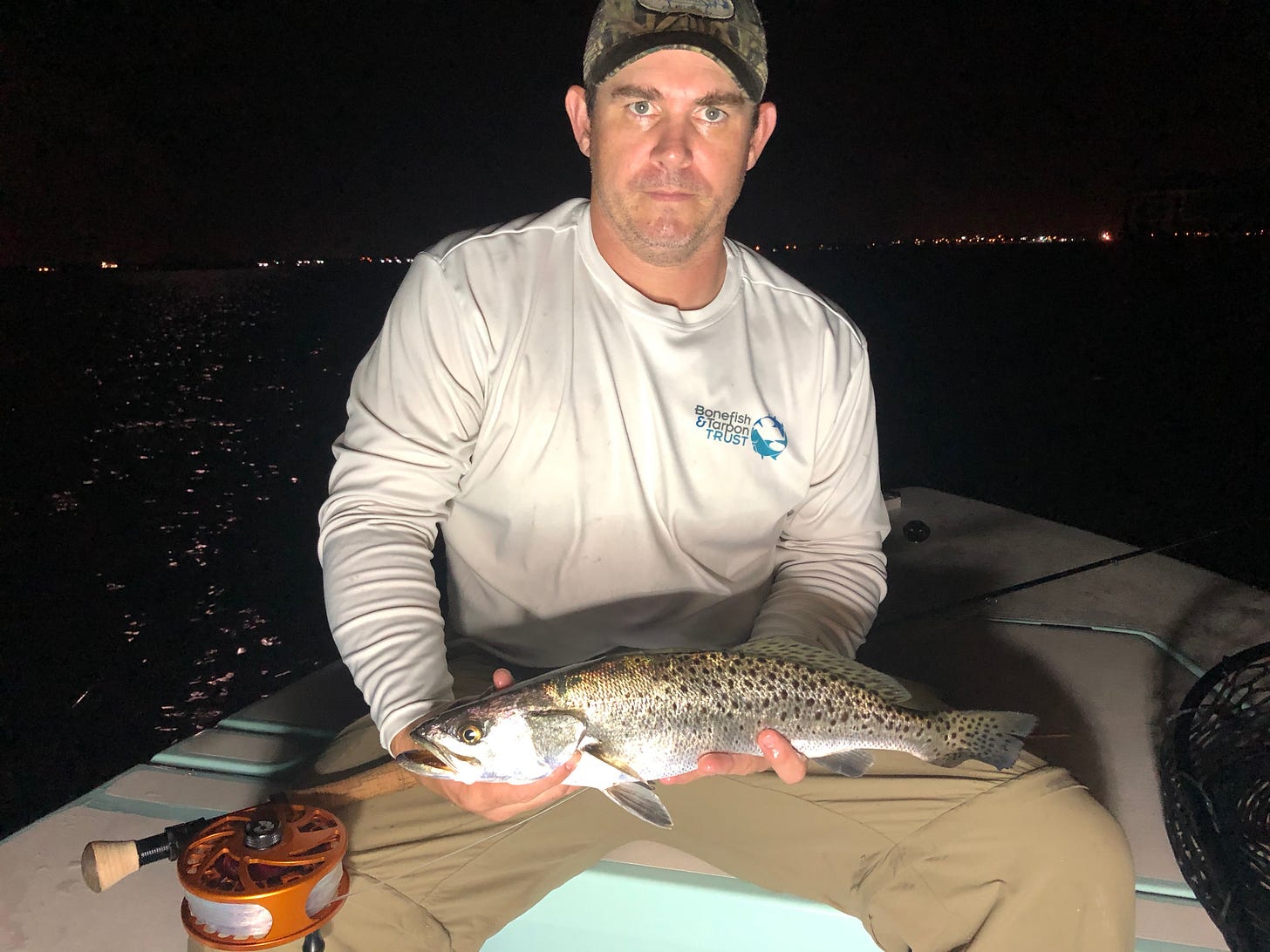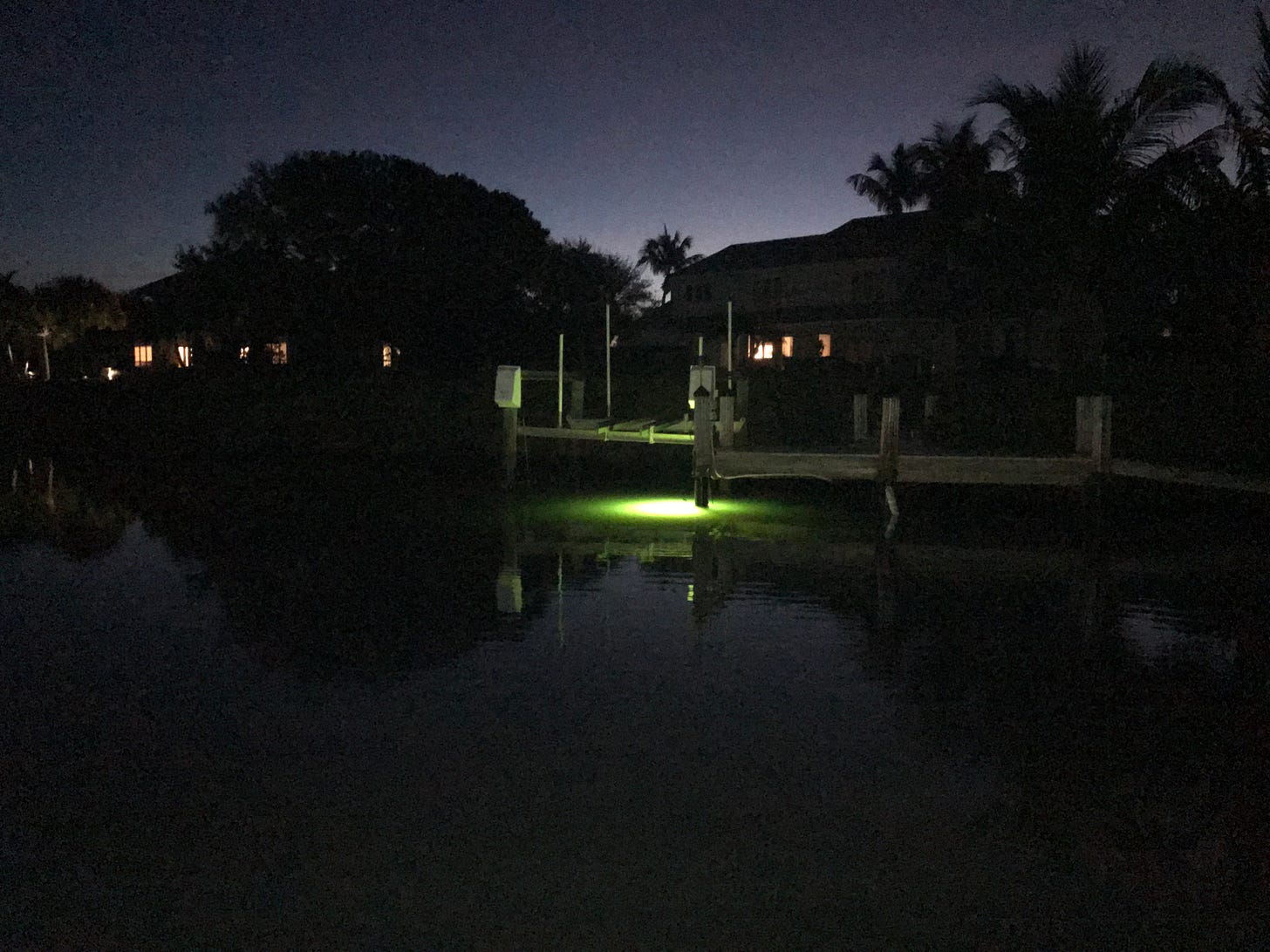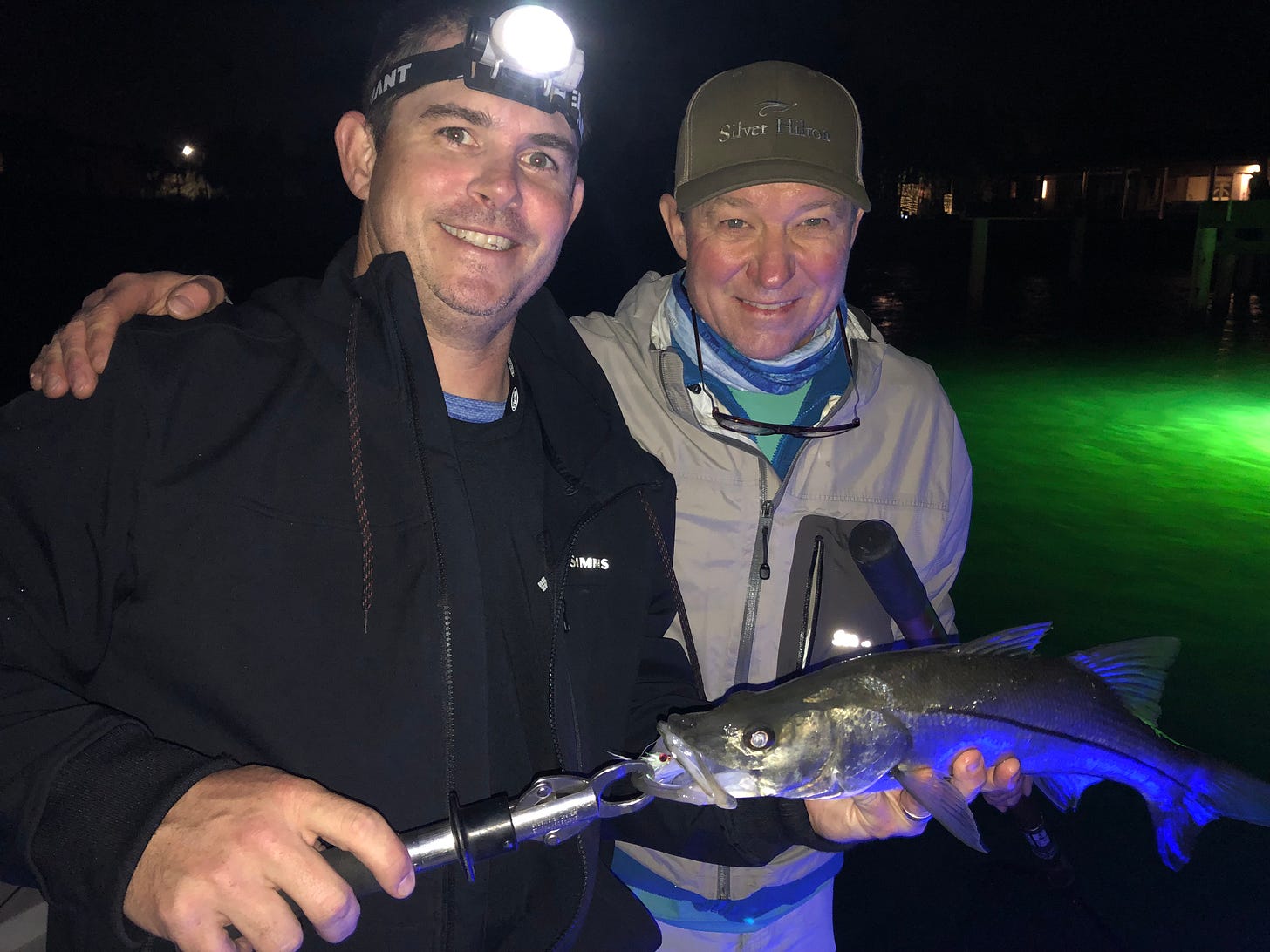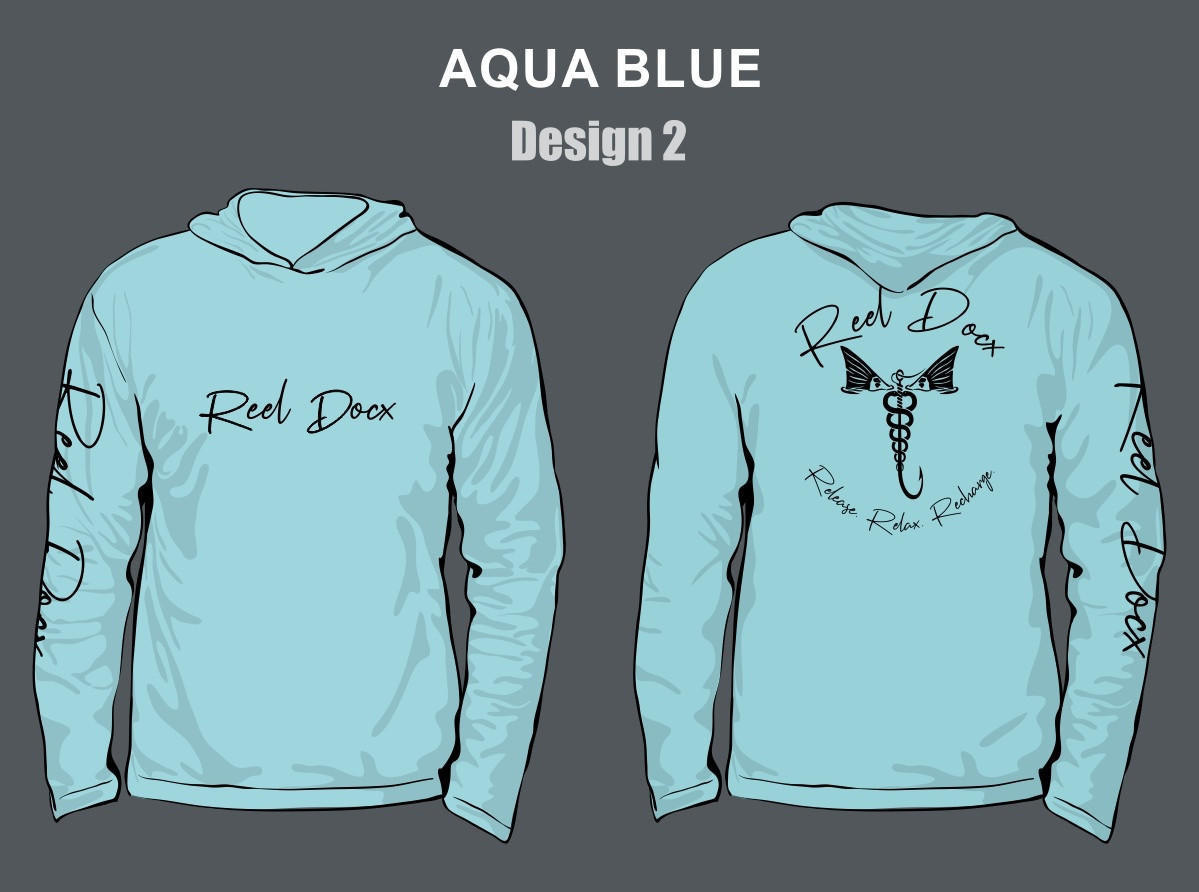If you were to ask Florida inshore fisherman what there favorite fish to target was, most would say Snook.
These silvery streamlined fish with their long black lateral lines and razor sharp gill plates are a favorite on both the east and west coast Florida fisheries because of their explosive strikes and there ripping runs. As ambush predators, they are usually found on docks or along mangrove edges as they allow the current to bring the bait past them allowing them to strike unseen by their prey.
With all the docks that line the coastlines of Florida, snook are a favorite to target whether using spinning tackle or fly. One such scenario that allows for exciting snook fishing is targeting them around the dock lights at night.
Mark Hanrahan (IG @codebluh2o) and I frequently target them at night focusing our efforts on the docks that have neon green lights that shine down into the water. The green lights attract small baitfish and shrimp to the structure, which in turn, creates a natural grocery store for snook and other predatory fish.
When targeting snook around the lights, we generally use 8-9 weight fly rods, 20lb tippet leader, and a short 40lb shock leader. This combination of gear gives enough backbone to fight the fish and get them away from the razor sharp oysters lining the dock pilings. Keeping the fish from running back under the dock will increase your hookup-to-catch ratio and keep from spooking the other fish under the lights.
When starting to fish the docks, we approach very slowly with the trolling motor staying 20-30 yards away from the peripheral shadow of the lights at first. We make very long casts to these peripheral shadows to try and catch those fish that are using the shadow lines as their cover for ambushing bait. Your hookup-to-catch ratio is generally higher on these fish as they are further away from the structure. You will also keep from spooking the fish closer to the lights and give you more shots at those fish hanging closer to the structure.
After we have made casts to those shadow lines, we inch closer to the structure making casts that cross over the top of the lights. This allows us to strip the fly right over the light. Generally, these snook will shoot out from under the dock and chase the fly, sometimes right to the boat. This is when the fishing gets really interesting because you have to gauge your distances very carefully.
If you and your buddy coordinate your casts, you can have double hook ups and be successful in landing those fish. The key is making sure you know which side of the light each will target. If the fish aren’t biting on the shadow lines, we will both cast to either side of the light, increasing our chances of hooking up on the first cast, as this is when, the fish are the most aggressive, and if the other fish spook, at least we were able to catch one off that light.
Usually docks have boats, and lines, and other objects that can lead to getting your fly severely tangled. Our goal is always to respect other peoples’ property and to leave the dock as we found it. At times though, inevitably, one or two flies will end up on the dock or around dock lines. Just be safe when retrieving your gear and respect other’s personal property.
As for the fly we like to use, it is a small white minnow with silver flashes. After much trial and error, we have found this fly to be the most successful around the lights, giving the best profile of the small bait fish and shrimp that frequents these lights. Stripping this fly in a short quick motion gets those fish fired up.
Since the lights act as a bait beacon and dinner bell, other fish will hang around the lights as well. Frequently, large sea trout will target these lights as well competing with the snook for their next meal. Many times we have seen fish on the lights, only to find that all the fish were sea trout. Some times jack crevalle will be mixed in, as well, darting back and forth across the light taking our fly before the snook or trout can react. Many times these other fish will spook our target species.
Once we see the fish leave the light, we leave and go to another light. Give that light some time to cool off as those fish will come back. You can usually fish a light several times a night, but you have to give the fish time to feel safe to come back before you target that light again.
Here is an example of one dock I fished by myself early in the morning waiting to meet someone at the dock. The bottom was shallow enough I could use my two powerpoles to stay anchored far enough away from the dock so as not to spook the fish, but close enough where I could make casts to the shadow lines and across the light. The snook I pulled off this light hit mostly on the shadow lines allowing me to catch multiple fish before they spooked off of the light.
Nighttime fishing around the docks is really exciting, but can be dangerous as well. Make sure that all your lights work on your boat and bring a high beam spot light so that you can see all channel markers and debris in front of the boat. Though you may know your waters well, with changing tides, you never know what may be floating in front of you.
If you have wanted to catch snook but you are having a hard time finding them or targeting them, give nighttime snooking around the docks a try. The lights are an easy way to locate the docks that will be holding fish. Bring plenty of flies and leader as you will inevitably lose fish to the structure and their gill plates. Be patient because when you get closer to the lights you will likely see large schools of fish swimming in and out of the lights chasing bait and you will want to start casting immediately to catch a fish. Take your time, gauge the current, target the peripheral show lines and make accurate casts.
Night time snook fishing is fun and exciting, plus, you have the added benefit of being able to catch fish without having to wear sunscreen. So, take a time out for yourself, unplug and recharge, and by all means, Go Fishing and Be Happy!!
To Wellness on the Water,
Graves Fromang
Check out the Reel Docx Shop
UPF-50 Long Sleeve Sun Protective Shirts to Help You to Release, Relax, and Recharge out on the Water!

